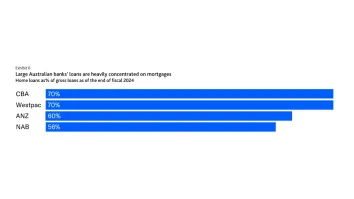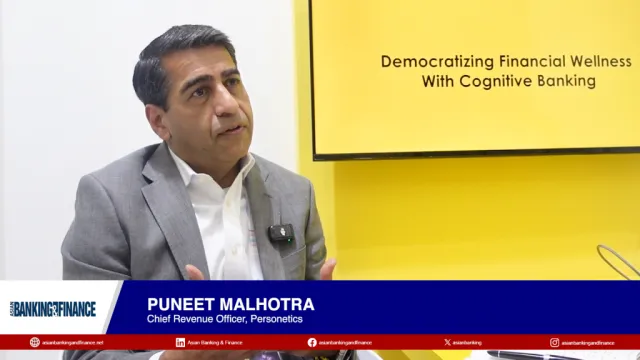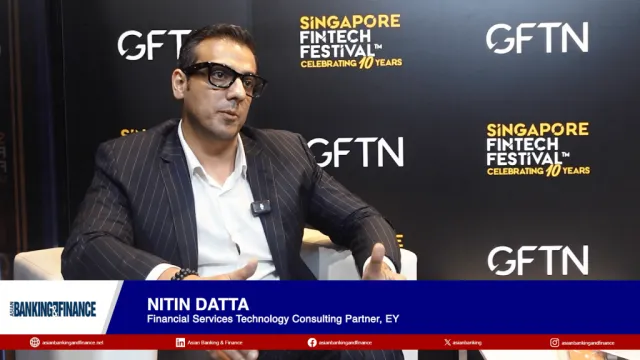
Biometrics vs deepfakes: How we’ll pay in 2025
Biometrics, passkeys, and improved data flow will shape the global payment sector.
Biometrics, new data standards, and the rise of artificial intelligence (AI)-powered fraud such as deepfakes and voice-cloning are amongst the key trends to watch out for in the payment industry this year, according to analysts.
A new global standard for electronic data interchange amongst financial institutions is the single-biggest change in the payment industry. Starting November 2025, financial institutions around the world must have a single file format for messages.
“Using common data formats will boost efficiency, streamline processes and simplify cross-border transactions,” Vijay Nagarajan, director of payments at data and analytics company LexisNexis Risk Solutions, told Asian Banking & Finance.
#1: ISO 20022
Whilst ISO 20022 introduces standardisation, it won’t completely fix all problems in cross-border payments and money transfers, Nagarajan said in an emailed reply to questions. He expects the payment industry to continue grappling with rising transaction costs, payment failures, and delays.
A failed payment costs about $12.10 per transaction, according to a LexisNexis report in 2023.
ISO 20022 will improve data flow through a unified framework between systems, according to Maxim Neshcheret, regional director for the Asia-Pacific region at Stockholm-based payment solution provider CMA Small Systems AB.
This will not only address integration issues but also enable more structured data collection, he added.
“Businesses must prioritise rolling out ISO 20022-based payment systems, standardising processes, optimising straight-through processing and ensuring compliance in vendor onboarding,” Nagarajan said. “These efforts will minimise friction and significantly improve payment success rates.”
#2: Digital identity and deep learning
The world of passwords, security questions, and even card numbers will increasingly become a thing of the past as companies turn to biometrics.
“Now and increasingly in the future, authentication will rely more and more on highly secure credentials — your face, fingerprints and other biometrics,” said TR Ramachandran, head of products and solutions for the Asia-Pacific region at Visa.
“This shift will enhance security and convenience, reducing reliance on traditional PINs (personal identification number) and passwords,” he said in an email.
Passkeys — password-less authentication powered by biometrics — will gain momentum in 2025, according to a January 2025 report by Mastercard.
Ramachandran expects deep-learning algorithms to become more sophisticated in analysing transaction patterns and identifying risks in real time. Visa, for example, has an AI solution that scores financial institutions using as many as 500 risk factors.
#3: Embedded finance
Embedded finance, where third-party financial products and services become part of nonfinancial digital platforms, will become more integrated in the merchant ecosystem in 2025, Ramachandran said. “We’re also seeing an uptick in embedded finance lending products and white-label embedded finance payment solutions.”
Solutions such as buy now, pay later and product insurance likewise offer customers more flexible payment options.
“When done right, it’s a four-way win — providers gain from low-cost distribution; enablers tap into demand for simplicity and convenience; distributors improve platform engagement; and most importantly, end-users get contextualised financial services in one place,” Ramachandran said.
#4: Automated fraud-handling
Financial authorities are expected to centralise their anti-fraud efforts using fraud centers.
Malaysia’s central bank, for example, has launched a national fraud portal for fund recovery and has set a benchmark for similar projects. Kazakhstan has its own Anti-Fraud Center, which has prevented close to $2m in fraudulent transactions.
These centers use AI and machine learning to detect fraudulent patterns in real time and streamline the process of handling scam reports, Neshcheret said.
#5: AI-powered attacks
Just as financial institutions and payments increasingly use AI, so too will the bad actors.
“AI-powered attacks such as deepfakes and sophisticated FaceID bypass attempts are advancing steadily, creating more convincing attacks,” Jan Sysmans, head of marketing for Asia-Pacific and Japan at mobile app security provider Appdome, Inc., told Asian Banking & Finance in an email.
Basic data and code-level defense and protection from jailbreak, root and man-in-the-middle attacks are no longer adequate against these threats, he pointed out.
To stay ahead, the payment industry should use a security strategy that goes beyond traditional runtime application self-protection, which monitors and blocks cyberattacks in real time, Sysmans said.
#5: Overseas payment links
Expect Southeast Asian countries to lead the development of more cross-border and real-time payment systems this year.
There’s the link between Thailand’s PromptPay and Singapore’s PayNow, allowing seamless transactions between them, said Hanspeter Jsler, a digital payment expert at German security technology company Giesecke+Devrient in Singapore.
“In a broader initiative, central banks in India, Malaysia, Thailand, Singapore, and the Philippines are collaborating to establish an instant cross-border retail payment platform by 2026,” he said.
There’s also the NEXUS project, which will start this year and represents a critical step to improve connectivity among countries. The project involving India, Malaysia, Thailand, Singapore, the Philippines, and Indonesia is expected to create an instant cross-border retail payment platform by 2026.
#7: Click to Pay and Stablecoins
Expect more e-checkout payment solutions when shopping online, Jsler said.
“Technologies like Click to Pay are emerging as solutions to this challenge, offering a consistent, secure and user-friendly e-checkout experience that works across devices, channels, and payment cards,” he pointed out.
Click to Pay could help lessen cart abandonment due to concerns over security and convenience. Stablecoins also have a chance to expand in 2025 amidst changes in global rules.
“With the introduction of MiCA in Europe and expected regulatory frameworks in the US, Stablecoins are set to gain wider acceptance,” Neshcheret said.
#8: Alternative data
Payment systems will increasingly use alternative data to fill gaps in traditional credit systems, according to Carey Anderson, CEO at New Jersey-based AI analytics company 1datapipe.
Alternative data include geolifestyle insights, transaction behaviors, and utility payment histories.
“These data sources enable advanced AI models to fill gaps left by traditional credit systems, creating opportunities for informal workers and small businesses to access financial services,” Anderson said in an emailed reply to questions.
AI models analyse alternative data to estimate income for informal and gig workers, giving a fairer and more accurate foundation for credit scoring and payment solutions, he added.



















 Advertise
Advertise










